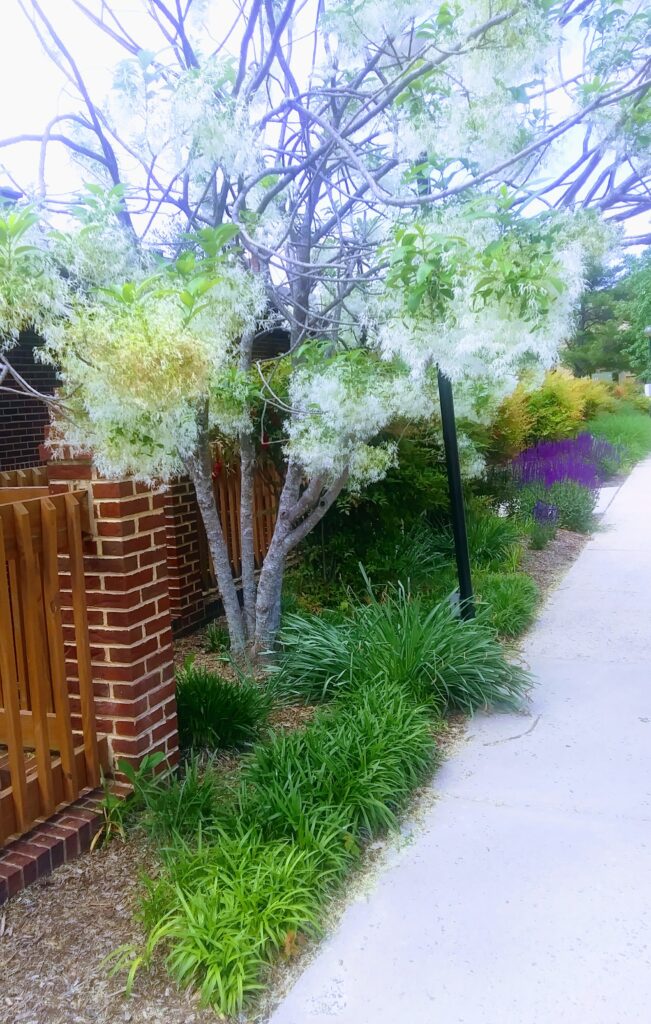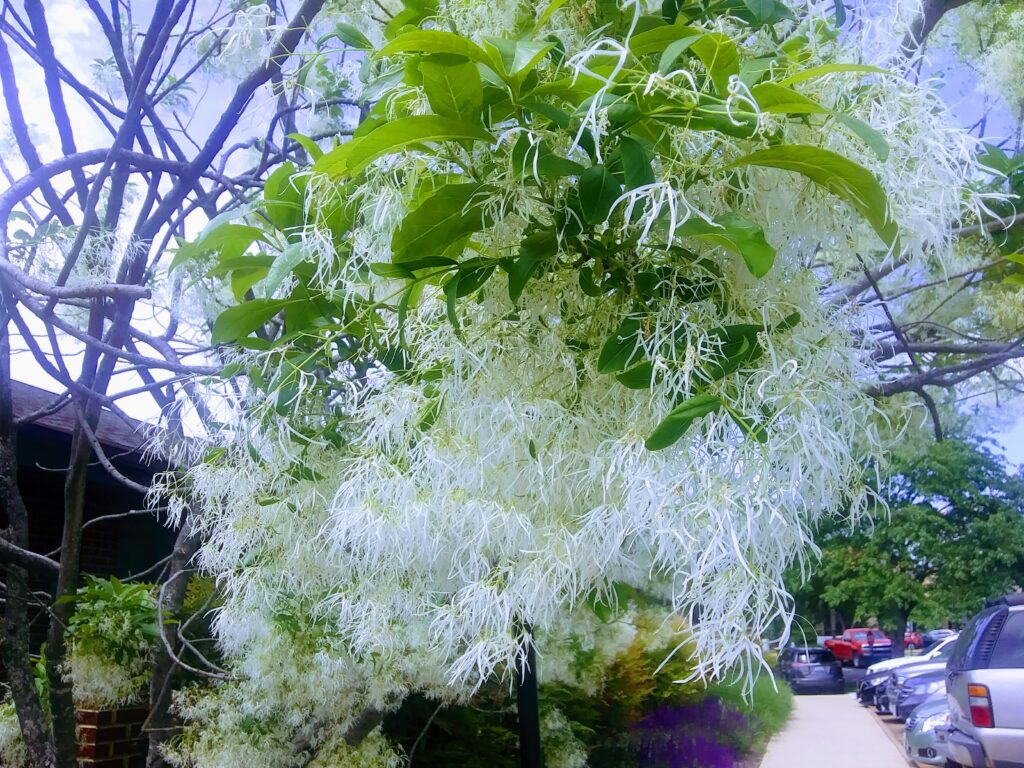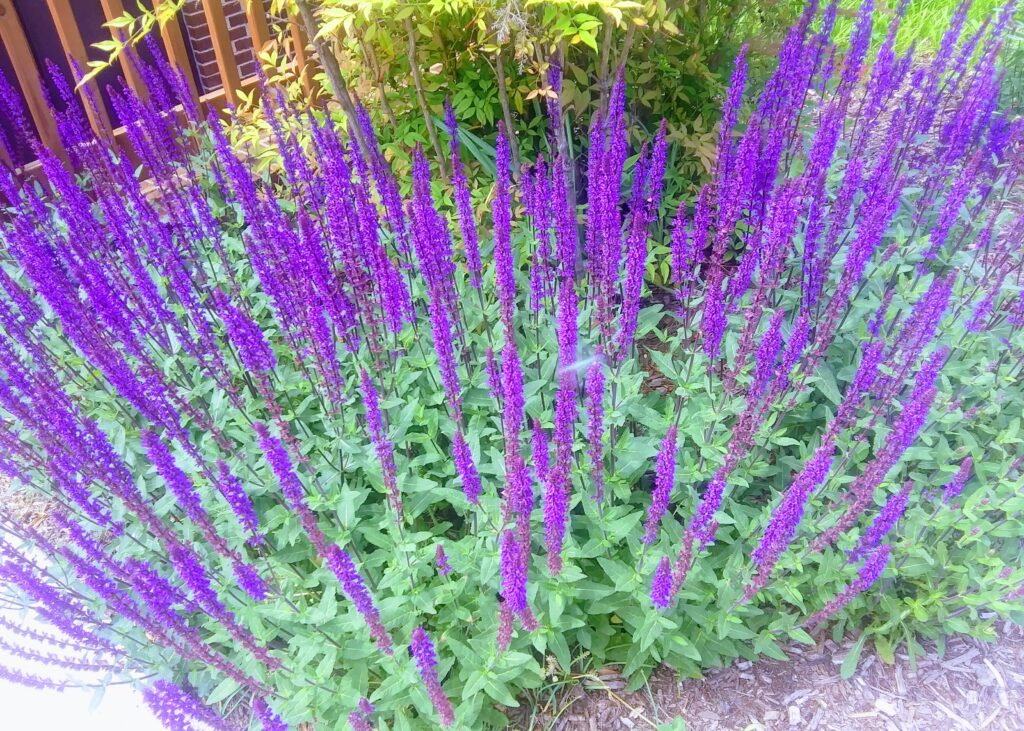I was off to the dental office this afternoon, when I saw this stunning tree in bloom and found out it is an American Fringe Tree.
I had to stop and take a few photographs since it is such a lovely tree and the blooms are so unusual looking.
Now I’m thinking do I have room in my yard for one small tree?
American Fringe Tree Facts
This tree has gorgeous drooping fringe-like white flowers. It is a small tree growing about 15 feet wide by 15 feet tall so it will fit into a lot of small spaces like this area near a sidewalk.
The tree is deciduous with the female plants producing blue berries which the birds like to eat. It, also, does well in temperature zones 5 through 9. Right now, this tree does not have too many leaves on it.

In the spring, it’s showtime when the tree blooms. Landscapers like to use the tree for front yard focal points.
The plant gets its name from the delicate fringe like blooms, (see below close up photograph).

Purple Salvia
Near the Fringe Tree were groupings of bright purple salvia plants, so the below photograph shows one example of the flowering plant.
We learned about Salvia in our backyard pollinators class.
Salvia Plants Attracts Pollinators
A big reason to plant salvia it that it attracts bees, butterflies and other pollinators.

Purple Salvia is a perennial plant. It is also drought resistant and does well in clay soil. There is also a variety of Salvia plants to select from.
Checking out the American Fringe Tree and the purple Salvia made the trip to the dentist a little more enjoyable.
It also made me think, that landscaper for this building, put quite a bit of thought into the plant selection.
Planting native plants, like the Fringe Tree, is good for the environment.
Resource Sites: www.finegardening.com, and www.hgtv.com

